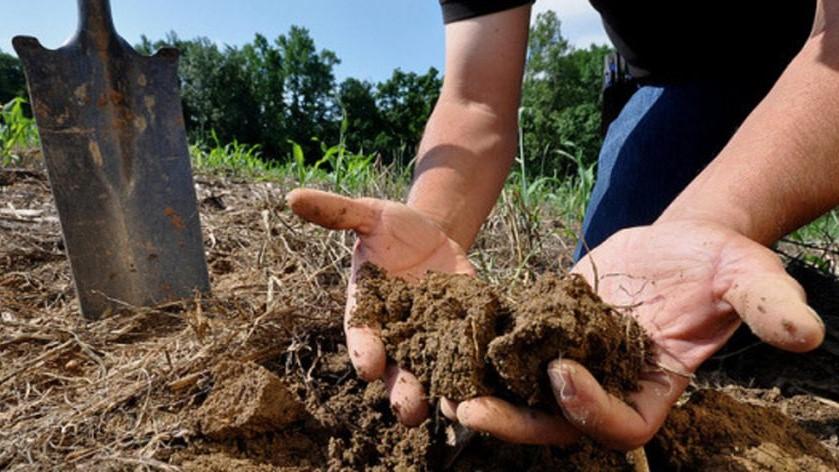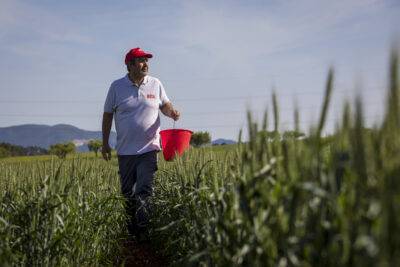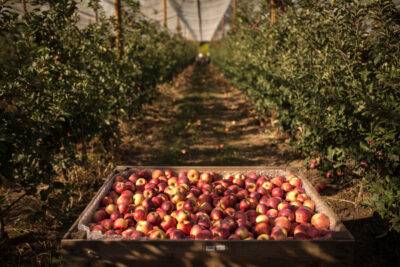
-
The impact on soil health and biodiversity of a set of techniques, such as cover crops, organic fertilization or reduced tillage, will be monitored.
- The research seeks to understand the microbiological processes involved in carbon sequestration and develop predictive models of a key cycle to reduce greenhouse emissions.
Soil conservation and recovery is one of the most important issues in terms of current good agricultural practices. The advance of agriculture on land with little structure, coupled with the effects of climate change, is generating a great loss of this resource, which is as indispensable as it is limited.
The purpose of regenerative agriculture is to restore soil health, both in terms of physical structure and biodiversity and chemical composition, through ecological processes.
Projects for healthier soil
With the idea of continuing to add in regenerative agriculture, IRTA and the Center for Ecological Research and Forestry Applications (CREAF) and the University of Lleida (UdL) have recently launched the AgriRegenCat and AgriCarboniCat projects. Both projects are focused on agriculture in Catalonia and the biotic and abiotic factors that influence it and whose common objective is to identify the best agricultural practices to increase soil ecosystem services.
 IRTA Torre Marimon, Caldes de Montbui 26.04.2022 Foto Pere Virgili
IRTA Torre Marimon, Caldes de Montbui 26.04.2022 Foto Pere VirgiliThe crops on which the trials will be carried out are: wheat, rice, apple trees, vines, orchards and pastures. Although the projects are focused on a final result, each one will analyze different parts of the processes involved. In the case of AgriCarboniCat, it will monitor the effects on carbon sequestration, while AgriRegenCat will focus on aspects such as soil fertility and biodiversity and its ability to withstand extreme weather events.
Various regenerative practices are already applied to extensive agriculture such as no-till farming, but there is no doubt that their use can be molded into similar techniques for intensive systems. The impact of agriculture generates a direct effect on soil structure and it is up to us to discover which techniques allow us to continue producing with the least possible effect. For example, an excessive use of phytosanitary products or tillage compromises its biodiversity (subway and above ground) and, therefore, its natural fertility.

A healthy soil is much more than just ensuring production.
However, the benefits of regenerative agriculture go beyond soil productivity. A soil with good structure is more resistant to erosion and helps retain more water, two essential ecosystem services. Conversely, the lack of organic matter makes it more vulnerable: "In the Mediterranean basin, torrential rains erode the most bare soils. Tons per hectare per year are lost. If it disappears, our grandchildren will not recover it, it is not renewable on a human scale," says Georgina Alins, IRTA researcher and coordinator of AgriRegenCat. Read also: The importance of keeping the soil alive.
Improving the carbon balance
In the biological cycle of life, one of the most important elements is carbon. Its excess or deficit can seriously affect the balance of the ecosystem and that is why its correct management is so important. Read also: The Spanish agri-food system measured through the carbon footprint.
Carbon is absorbed from the atmosphere through the process of photosynthesis carried out by plants, then fixed in the soil when the plants die and finally released back into the atmosphere by decomposing organisms. Agricultural management can intervene in this cycle. This is the case of practices studied at AgriCarboniCat: "We want to increase the amount of carbon in the soil, which is difficult to decompose and remains underground, and that this occurs both because of its chemical nature and because of the diversity of microorganisms. In relation to microorganisms, the more they have to compete with each other, the slower the degradation of organic matter will be," says Maite Martínez-Eixarch.

Sobre los proyectos
About the projects
AgriCarboniCat and AgroRegenCat will be closed in 2025, after a transfer phase of good agricultural practices, with sectoral workshops or public awareness activities. Both are projects coordinated by IRTA, with the participation of CREAF and financed by the Climate Fund of the Department of Climate Action, Food and Rural Agenda. The University of Lleida participates in the research in AgriCarboniCat.
For their implementation between 2022 and 2025, the projects have, a budget of 2.6 million euros. 2 million for the regenerative agriculture (AgriRegenCat) and 600,000 euros for the one focused on carbon agriculture (AgriCarboniCat). All of them are fully provided by the Department of Climate Action, Food and Rural Agenda through the Climate Fund, which is fed with 50% of the revenues obtained from the tax on CO2 emissions from motor vehicles and 20% of the collection of the tax on facilities that affect the environment.
